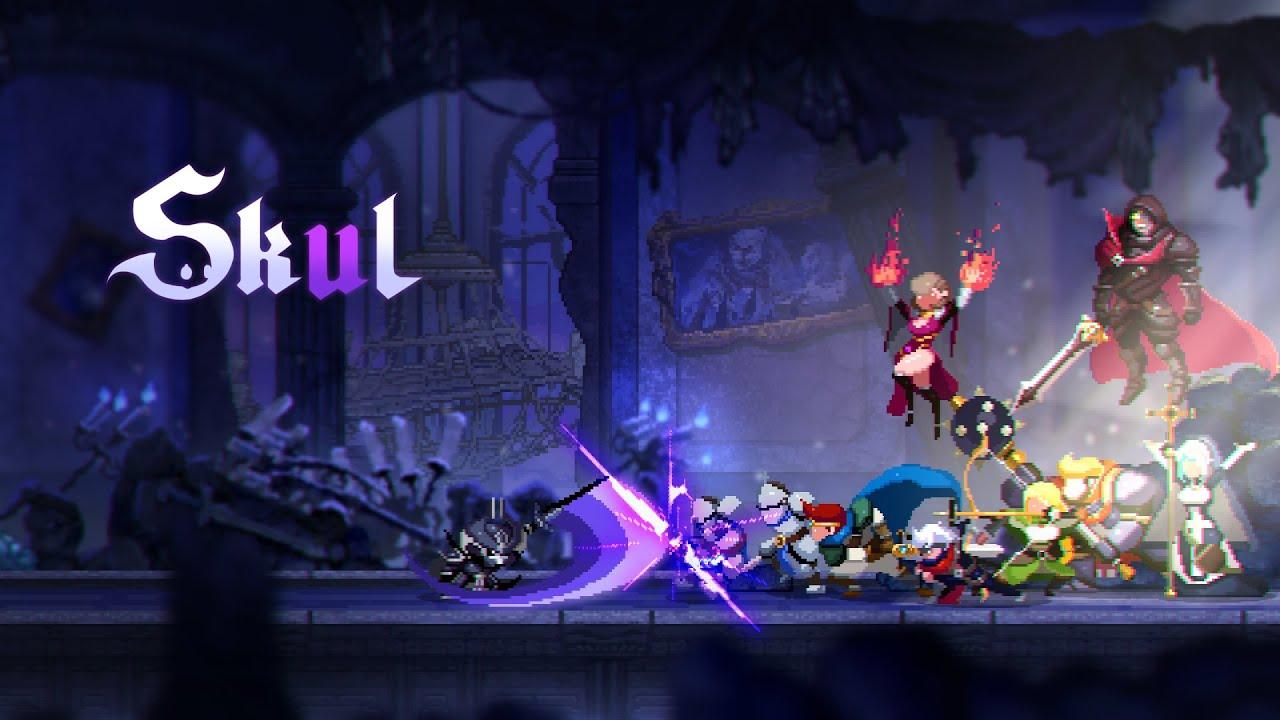

Certain environmental traps, like thorny vines, exist to keep you from standing in one spot for too long, but others, like the plants that intermittently spit projectiles, feel like they’re from another game entirely. Too often though, the shape of the level places enemies on awkward to reach ledges, or spawns enemies designed to be kept at arm’s length next to those who need to be fought up close. Trees have come to life, corrupted by the purple stuff you’re using to enhance your abilities, and granted the magical ability to send sharp roots up through the ground from a distance, or emit hot pink guffs of poison gas around them. As the last demon soldier left behind, you’re fighting a human army comprised mainly of warrior fodder, with a few crossbow snipers and double-sized brutes to mix things up. Here, it feels the slim variety in enemies in this version of the game doesn’t match up to the grab bag assortment of skulls you’ll be wearing. Depending on which one you start with or find, your run will shape up differently, either pressing you to get up close to enemies to poke them to death, get all aerial on them, or hang back for ranged attacks. New skulls crop up in graveyards that appear every four or five rooms or, once you’ve progressed a short while into the first area to rescue a helpful fox character, can be picked up immediately after respawning.

The variety in skulls is bonkers huge, with the most powerful ones appearing less often than your run of the mill, bread and butter bones. The jester can chuck knives which explode, a gargoyle skull lets you fly. The minotaur skull grants you an area of effect ground-pounding skill, useful for bunched up enemies. Slip into the wolf skull and you can move around more quickly, cause damage when you dash and perform a powerful short-range claw attack. Swap out your regular skull for the mummy skull and, in exchange for reduced movement speed, you get a gun and become impervious to damage from traps – the universally agreed upon characteristics of a mummy. This is: there are dozens of other skulls you can replace your own with, each one granting you new powers and abilities. The fighting feels snappy and wholesome, with the well-drawn enemies graciously telegraphing their attacks with helpful winding-up animations, so that at the top of your game you could reasonably chart a course through the rooms without ever taking a hit.īut wait, all of that’s not even the point of the game. You can throw your skull like it’s a bony hand grenade, as well as slash with your sword and dodge to slip past attacking enemies. Instead, Skul is a room-clearing combat game set in a fantasy world, where you defeat enemies in randomised arenas to unlock doors and proceed through chapters. You never have to drop your own head down a laundry chute to reach a locked basement, or send your skull up in a dumbwaiter to materialise unexpectedly on a mafia boss’s dinner table. While teleporting after your own skull sounds like the basis of a puzzle platformer, that’s not what Skul is. Unique to your hero is their ability to remove and throw their actual head at enemies, before either running after it to collect it or teleporting to wherever it landed. It’s an early access rogue-like, in as much as you respawn back at a big demon temple whenever you die, holding a pocketful of purple currency you may use to improve some of your attributes before trying again.
SKUL THE HERO SLAYER BONES PC
After all, we’ve long since hit peak pixel, reaching the stage in society where lovely chunky squares are the mainstream rather than the exception, and aliased edges and bezier curves have to cower and beg in the street for hovering roast chicken sprites.ĭoes that make any sense? I’ve got a touch of fever this evening and I’m writing this introductory paragraph in a state of delirious hypochondria, so my usually astute and cutting edge observations have reverted back to PC gaming circa 2007.Įarlier however, back when I wasn’t careening ass-first down a greased-up slippy-slide to my almost certain demise at the gaping maw of a global pandemic, I was very much enjoying playing a little game called Skul.


This week, he's losing his head in skeletal action platformer Skul: The Hero Slayer.Ī side-scrolling roguelike with a pixel art style and an adorable little skull person protagonist, Skul: The Hero Slayer could easily be mistaken for about seven thousand other early access games. Premature Evaluation is the weekly column in which Steve Hogarty explores the wilds of early access.


 0 kommentar(er)
0 kommentar(er)
